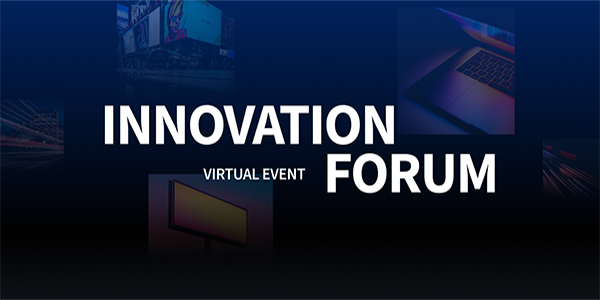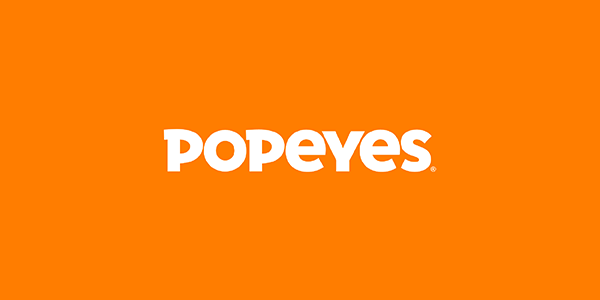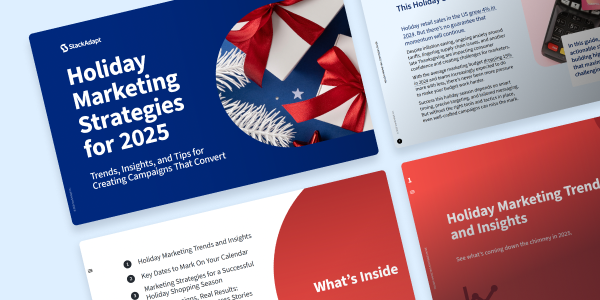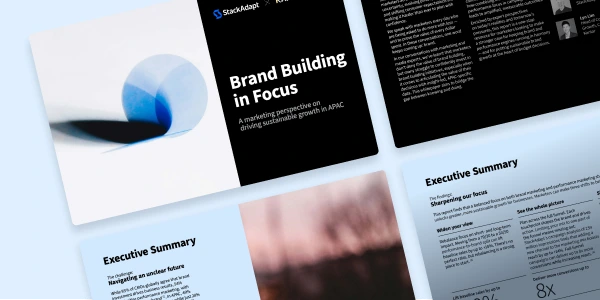The AI Advertising Podcast: S1
Episode 5
AI and Predictive Analytics – The Next Step in Targeting

About This Episode
What if you could predict exactly when and where your next customer will convert? AI-powered predictive analytics is making that possible, helping advertisers shift from educated guesses to data-driven certainty.
In this episode, we explore how AI is revolutionizing audience targeting, media buying, and budget optimization.
Carole Lawson | Chief Data Officer, MarketStorm
Yang Han | CTO, StackAdapt
Ned Dimitrov | VP of Data Science, StackAdapt
Transcript
Diego Pineda (00:00:00)
What if you could predict exactly when and where your next customer will convert? Sounds like marketer’s dream, right? But in advertising, AI-driven predictive analytics is making it a reality. Every ad campaign is a bet—on the right audience, the right moment, and the right message. Predictive analytics is helping advertisers shift from educated guesses to data-driven certainty.
Today, we’re diving into how AI is revolutionizing predictive targeting, media buying, and audience segmentation with three leading experts:
Yang Han, the CTO, StackAdapt, on the role of AI in predictive modeling and personalization.
Ned Dimitrov, VP of Data Science, StackAdapt, on how AI predicts auction outcomes in milliseconds.
Carole Lawson, Chief Data Officer, MarketStorm, on real-world applications of predictive analytics.
From smarter ad spend allocation to real-time consumer behaviour insights, AI is transforming how brands reach their audience. Let’s get into it.
Podcast Intro (00:01:13)
Welcome to the AI Advertising Podcast, brought to you by StackAdapt. I’m your host, Diego Pineda. Get ready to dive into AI, Ads, and Aha moments.
Diego Pineda (00:01:26)
We hear the term predictive analytics all the time—but what does it really mean in the context of digital advertising? Yang Han breaks it down.
Yang Han (00:01:36)
Advertising plays a role across the board for brands to just help drive their growth, right? And the advertising ecosystem has a lot of components to it to make that work. It also deals with a lot of data from the publisher side, the advertiser side, and so forth. And so, there is a lot of areas in which whenever there’s data, there’s AI, right? So there’s a lot of areas in which AI has to play a role to make sure that the entire process end to end is as intelligent, smart, and ultimately drives growth as much as possible.
Diego Pineda (00:02:14)
Simply put, predictive analytics turns data into foresight. It helps advertisers identify who is most likely to convert, determine the best time and place to reach them, and optimize budget allocation for maximum return on investment. And the data sources fueling AI’s predictions are key.
Yang Han (00:02:38)
The most important data is probably the data from the advertiser itself because every brand is unique. Every brand has different scale and historical data that it can leverage to become more intelligent and learn from it. So a brand’s first-party data is probably the first and foremost, the most important to drive the most meaningful results.
And then there’s third-party data in the ecosystem, data that may be derived from other sources, third parties, and the quality of that may vary. So there’s a lot of due diligence that is involved when it comes to working with different partners and different verticals to understand where the data comes from, how scalable is the data set, how accurate is the data set, and how it can best be used in conjunction with and the rest of the data you have.
And then this data that can be accumulated and generated as you know advertising is ran from historical results and as you run, you know, your advertising, you also want to assess the performance of it relative to, you know, what inventory and what publishers and what sites you’re running on as well.
Site intelligence and general fraud detection, brand safety is also very important in the ecosystem because in advertising itself, you’re connected to so many different, you know, pockets of inventory, different parts of the internet, and you want to make sure that what you’re buying and where you’re buying on a has high quality users, has legitimate users, has content that is legitimate, especially in the world in AI where a lot of things are automatically generated.
So you have to also use AI to help assess that essentially, as well. So quality when it comes to what you’re running, but then you also have to marry that with the unique trends and data points of the brand itself.
Diego Pineda (00:04:23)
But predictive analytics isn’t just about better targeting—it’s reshaping how ads are bought and sold.
Diego Pineda (00:04:33)
Imagine this: an ad auction happens in milliseconds—and AI has to predict, in real time, whether a bid will convert into a sale. That’s where machine learning meets predictive analytics. Here’s Ned Dimitrov.
Ned Dimitrov (00:04:47)
Machine learning has a big part to play in getting advertisers return on their investment. So, a company like StackAdapt participates in billions of ad auctions every day. And each client has their own specific goals for the advertising campaigns that they have. So one of the things that happens is whenever we receive an opportunity to participate in an auction, the machine learning models have to evaluate how likely is the outcome of that auction—likely to turn to something positive for the advertiser. Like, is it going to turn into a click? Is it going to, after the person clicks, is the person going to stay on the website for a while and read what’s on there? Is it going to turn into a sale for the advertiser?
And so we have many machine learning models that predict at bid time what the likely outcomes of the auction is, so that we can determine how valuable the auction is for the client advertiser. And we can bid accordingly in the auctions. One of the things that makes this particularly interesting in the advertising space is that the time for these predictions is very small. Typically, you have about a millisecond to do the prediction. And so the machine learning models are highly optimized. They’re not sort of the large language models that many people might be used to where they take six or seven seconds to come up with an answer. They have to be very both very fast and very accurate to really give return on investments on the advertisers.
Diego Pineda (00:06:19)
This is a game-changer for advertisers, as AI can now bid more aggressively on high-probability conversions, also avoid wasted ad spend on low-value impressions, and optimize ad performance in real time. But it’s not just about winning auctions—it’s about winning the right auctions.
Ned Dimitrov (00:06:39)
Making sure that the inputs to the models are accurate is a very difficult problem. This is especially because of the previous fact that I mentioned that the predictions have to happen very, very quickly. And so what typically happens in a system like ours is there’s sort of one software system that trains the models offline. And another software system that actually executes them at bid time. And there often can be disagreements in the way that the information is presented in the offline system and the online system. So a company like StackAdapt has to build very complex verification software on top of the models to make sure that all the information going into the models matches between training and execution and is as accurate as possible. And so we have ongoing daily reports that say, like, what the match rates are between the information. If there’s a mismatch, we start investigations about why there’s a mismatch. Because it’s very easy for there to be a small bug in the software that makes the ML models essentially produce noise as opposed to accurate predictions. And so verification is a key part of having the systems work well in production.
Diego Pineda (00:07:53)
But what happens after the bid? AI doesn’t stop working there.
Diego Pineda (00:08:00)
The moment a user sees an ad, AI is already predicting what they’ll do next. Carole Lawson, a data scientist who works with small and medium businesses, explains it better.
Carole Lawson (00:08:11)
It’s really huge. It’s not just in targeting the right customers for the clients. So, for example, we do a lot of work with data that maybe people don’t work with the same way. We’ll take the conversion journey. We’ll calculate how many ads over how many days. We can do predictives against the number of ads over the number of days so we can see the timeline changing, the decision timeline for the customer. That helps us advise the client related to budget or what they can expect for revenue. And of course, you can’t be absolutely precise, but you can give an idea. So we’re seeing this percentage of change in the timeline it takes and the number of ads it takes for someone to make a decision, which translates into that decision is going to come two weeks later than it might have previously.
Diego Pineda (00:08:57)
AI is helping advertisers move beyond basic audience segments by creating dynamic, behaviour-driven personas.
Carole Lawson (00:09:06)
So the predicting of the consumer behaviour is not as clear as many of the companies would want you to believe. What you really have to do if you’re going to predict consumer behaviour is get to know your consumers, create that baseline, and then watch what changes. And then use your AI tools if you have them available. And for us, it’s things like Cortex because we use Snowflake. Take a look at what’s changed over time. And as things have changed over time, ask your AI, what are what else has changed. I see this has changed. What else has changed? And then you’ll start getting a sense for what levers start moving what wheels. Once you start understanding that, it’s kind of a process. I mean, you don’t just jump in and there’s this magic AI. Once you start understanding that, then you’ll begin to look at those little levers and be able to ask smarter questions as you go along.
Diego Pineda (00:10:03)
Predictive analytics also helps answer critical questions for marketers, like: how many ads does a user need to see before they convert? What’s the best time of day to run a campaign? How does weather, location, or device type impact engagement? Not only that, but it’s reshaping ad budget strategies.
Yang Han (00:10:25)
Once you understand which pockets of, you know, the channels you’re utilizing is driving more growth, then you would tweak and allocate effectively across the different ad channels. So we try to do this obviously within the channels we support in our system, which we have algorithms to auto-balance the budget, depending on your KPIs. But there is continuous work in the whole ecosystem to get better at this because, in reality, a lot of different channels play a role that you cannot simply just easily see just looking at you know high level data and correlations. There’s a lot of sequential causational relationships, that is also happening behind the scenes. And so even though one channel may not look good with certain metrics, but if that channel gets turned off, sometimes what happens that, you know, brands will see their end result declining. And so there’s lot of sophisticated relationships going on. And I think there’s a lot of experimentation that brands need to do right now to really figure out you know, the right allocations that is really maximizing the growth of their business essentially.
Diego Pineda (00:11:34)
Which means AI isn’t just optimizing ads—it’s optimizing entire marketing budgets.
Diego Pineda (00:11:42)
Predictive analytics is already transforming advertising—but where is it heading next?
Yang Han (00:11:47)
There’s a lot of room for it to continue to grow and evolve. I think, brands have a lot of data when it comes their first-party data, when it comes to understanding what their customers are doing, understanding the quality of different customers and their actions. And this varies by vertical. For example, an e-commerce store, you know you really want to get deep insights into what customers are buying in what locations and whatnot. It can get really granular. And on the B2B front, you really want to understand what leads are the most important that you want to invest the most in and so forth. um But the paradigms are quite similar to in the sense in which you’re trying to understand the patterns of what makes your business successful, right? So that you can try to replicate as much as possible. A lot of times that has always been quite a manual process, where brands are, you know, manually trying to understand this and then come up and replicate strategies that align with that. But, especially as brands accumulate more data, like AI can really start to automatically understand this and automate this end to end when it comes to the whole spectrum, being able to understand what drives success within your business, understand the ideal channels to allocate and target in, and then be able to continuously optimize so that you drive as much incremental growth as possible.
So this whole flywheel right now is quite, there’s a lot of manual elements. There’s it’s It’s quite a bit fragmented still, but there’s a lot of opportunities for AI to really understand the end-to-end and bring it together. That’s why I feel like for AI to really succeed, you need a platform that can integrate as many solutions as possible rather than stitch together like a fragmented ecosystem where everyone is working in silos. Every platform has a limited view of the data because without a broader view, you know, how can AI really understand and go strategic data there and make the right choices and recommendations, right? So it all starts with being able to bring everything together so that there’s the full line of sight of what is working and what isn’t.
Diego Pineda (00:13:52)
The big takeaway? Predictive analytics isn’t about replacing human decision-making—it’s about enhancing it. The brands that embrace AI-powered targeting today will have a serious advantage in the future.
Diego Pineda (00:14:08)
So, what should advertisers do next? Here are my three recommendations. First, leverage predictive analytics to refine your targeting strategies. Second, use AI-driven insights to optimize ad spend across channels. And third, stay ahead of the curve by testing new AI-driven tools. In the end, Predictive analytics is no longer a nice-to-have—it’s a must-have for brands that want to thrive in the future of digital advertising.
Podcast Outro (00:14:41)
Thanks for listening to this episode of The AI Advertising Podcast. This podcast is produced by StackAdapt. Visit us at stackadpat.com for more information about using AI in your advertising campaigns. If you liked what you heard, remember to subscribe, and we’ll see you next time.





